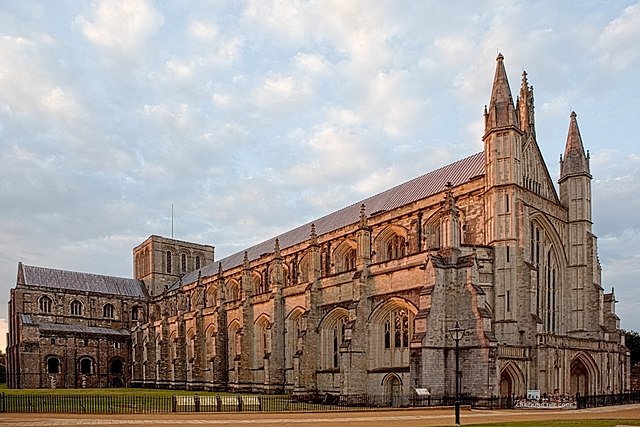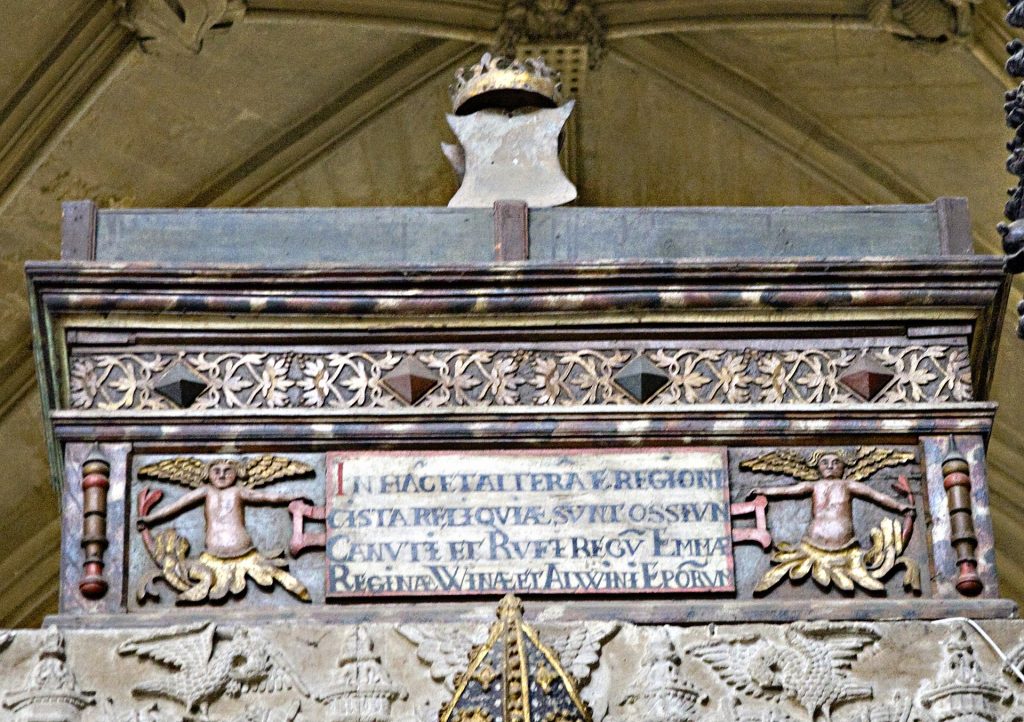It’s not uncommon for historic buildings to hold hidden secrets, and this month Winchester Cathedral has unveiled one of its own.
Biological anthropologists have analysed and radiocarbon-dated the contents of six wooden mortuary chests. They have discovered that they may hold the bones of one of the most powerful queens in English history: Queen Emma.

The skeleton of Queen Emma, who died in Winchester in 1052, has been found among a jumble of 1,300 bones contained within six painted caskets that have previously been located near the cathedral’s high altar. The chests had formally been held in a unique mausoleum of Anglo-Saxon royals and relatives at the cathedral known as the Old Minster (although this was demolished in 1093). The caskets were thought to contain the remains of kings and bishops from before the Norman conquest in the 11th Century.
Queen Emma’s bones were discovered as part of a research project conducted by the University of Bristol, which began in 2012. The scientists have spent many years reassembling the bones and analysing their sex, age, and physical characteristics. This eventually led to the apparent discovery of Emma of Normandy’s remains.
Since the research began the chests have been held in the Lady Chapel, which has become a temporary laboratory that allows researchers the space to test the bones without moving them too far from their resting place. In total, they have discovered that there are 23 people in the chests, including two boys aged between 10 and 15 who are believed to have been of “royal blood”.

Commenting on the research, Professor Kate Robson Brown said: “We cannot be certain of the identity of each individual yet, but we are certain that this is a very special assemblage of bones.”
While scientists may not yet have all the facts, they do know that those previously looking after the contents of the cathedral knew that the inscriptions on the side of the caskets did not accurately reflect who was inside. This is due to the fact that the bones had been scattered by Roundhead soldiers during the English Civil War in 1642 and were subsequently repacked by locals. As a result, scientists are still unsure of whose bones actually made it back into each chest.
Queen Emma – also known as Emma of Normandy – was queen consort to two kings of England including Ethelred the Unready and Danish invader Canute. Born in the 980s, she was the daughter of Richard I, Duke of Normandy and became a key political figure in her own right, giving the dukes of Normandy a hereditary claim, to the English throne.
She was also the mother to Edward the Confessor (who reigned between 1042 and 1066) and King Harthacanute (who reigned between 1040 and 1042), and the great aunt of William the Conqueror. This fact was used by William as part of his justification for claiming the throne of England and beginning the Norman dynasty.
Although the identity of the bones has not been completely confirmed, scientists are currently carrying out further DNA tests in a bid to definitively establish the identity of the skeleton.
